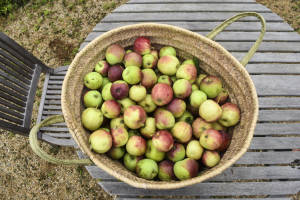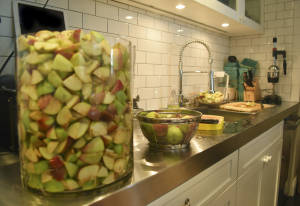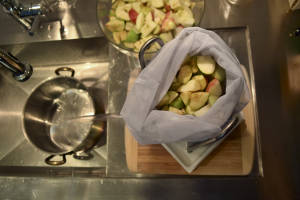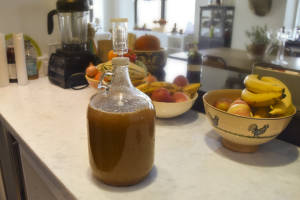
How To Make Hard Apple Cider at Home
Apple cider has always been part of my life. Growing up in Boston, apple cider was as much a Fall staple as pumpkins and Thanksgiving. We used to drive to Wilson’s Farms in Lexington just to buy it fresh, as apple picking was another staple of my childhood– but I never learned how to make fresh apple cider.
Going to school in New Hampshire, cider was just as present. Gradually, as most people my age do, I discovered the joys of beer, and it was at college that I first encountered hard cider. I was vaguely aware that in Europe the majority of cider was alcoholic, but I’d never tried it.

Hard Cider is generally a crowd pleaser in college. Most of the common ciders in America are made with eating apples and added sugar and are generally sweet and inoffensive.
I quickly discovered the dryer, low alcohol ciders of France, as well as the extremely common English ciders. But, being in New Hampshire, the most promising prospects were right across the river in Vermont; there is currently a cider revolution going on in the U.S., with Vermont leading the charge.

It was a fortuitous coincidence that while my interest in cider was growing, my mother decided to plant a row of apple trees in her garden. After just 4 years, the trees were growing well and were surfeit of hundreds of apples.
Recently, as we surveyed the baskets of harvested apples, we realized we had two options: making cider or making applesauce. I’ve never been a fan of applesauce.
So, cramming the apples into the refrigerator, I went online to answer my basic question: just how is hard cider made?
There is a lot of information online about the production of apple cider. I found dozens of books (some free) on Amazon, and lots of helpful web forums. The internet will tell you that there are two methods of extracting apple juice: in a food processor, or with a portable cider press.
I found the notion of finding a press much more authentic and romantic then just using a food processor. But, finding one proved harder than I thought. Manhattan is not exactly cider-pressing central, so I was happy to find Pleasant Hill Grain’s Tabletop Fruit Press online.

Having acquired my press, I waited a few days, and when it arrived I set to work. Enlisting the help of a friend– bribed with some Farnum Hills Cider I brought back from school– we begin the task of shredding the apples.
Although we probably lost more juice then if we had a dedicated shredding machine, we were still able to create a kind of apple puree. This we then put in the cloth bag which comes with the press. After that, we were able to shred the rest of the apples and press them in under two hours.

Our result for using 300 apples was a little over 2 gallons of cider. The next step was to boil the cider on the stove top in order to kill off any residual natural yeast and other bacteria which might be lurking in the juice. That done, it was finally time to put the cider in jugs to age. First, we carefully cleaned everything involved in the operation.
Next, we poured the cider into jugs (standard beer growlers can be used) and added white wine yeast. The final step is to put the cider somewhere dry and dark and to let the yeast work its magic. After two weeks, the cider should be ready for bottling. Much as with brewing beer, this is the fun part– because you know you’ll be able to drink it soon.
To purchase your own 1.25 Gallon Tabletop Fruit Press, visit Pleasant Hill Grains online.

































